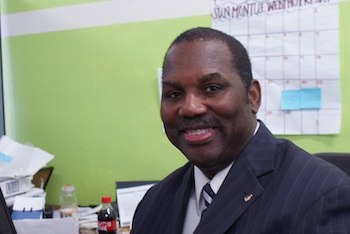
A shocking amount of sunlight permeates the “Mike Davis for City Council” campaign signs that paper the front windows of his campaign headquarters. Inside, precinct maps and outreach goals accent lime green and bright orange walls. Six volunteers sit at two temporary tables, munching on pizza and tacos and shuffling call sheets. [Read more…]









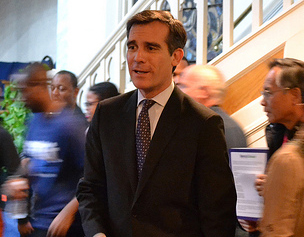 We’re probably going to see a lot more of Eric Garcetti.
We’re probably going to see a lot more of Eric Garcetti.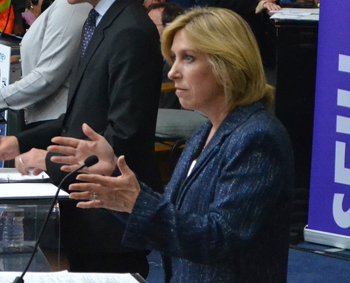 The mayor’s office would bring Wendy Greuel’s long political career full circle: She started in the same room.
The mayor’s office would bring Wendy Greuel’s long political career full circle: She started in the same room.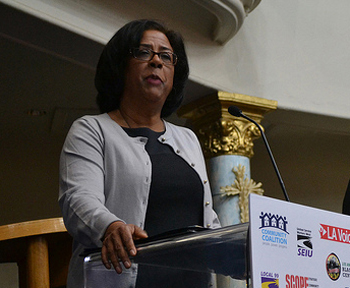 Jan Perry/ File photo.
Jan Perry/ File photo. 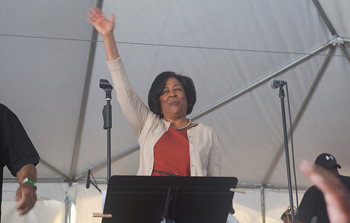 Jan Perry at the Central Avenue Jazz Festival, July 2012.
Jan Perry at the Central Avenue Jazz Festival, July 2012. 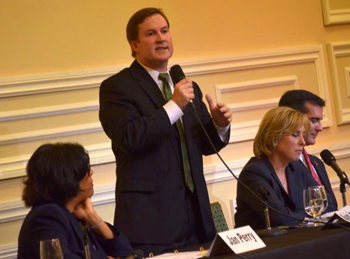 Photo by Graham Clark/Neon Tommy.
Photo by Graham Clark/Neon Tommy. 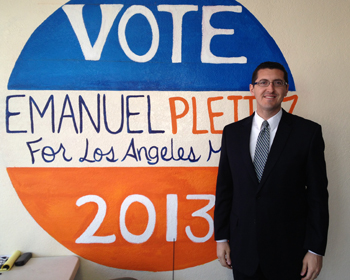 Emanuel Pleitez is the Los Angeles mayoral race’s undisputed underdog:
Emanuel Pleitez is the Los Angeles mayoral race’s undisputed underdog: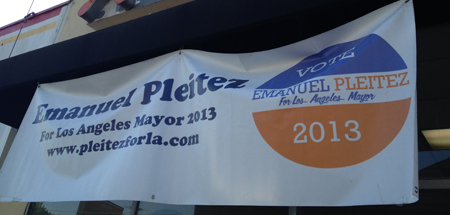
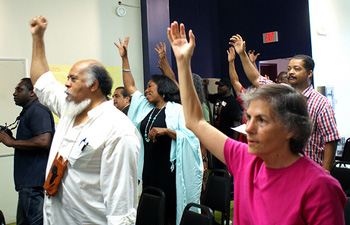 Rosalie Peterson of the Department of Neighborhood Empowerment raises her fist in the Community Issues Forum’s introductory Harambee chant.
Rosalie Peterson of the Department of Neighborhood Empowerment raises her fist in the Community Issues Forum’s introductory Harambee chant.  Moderators Carlos Montes and Maulana Karenga analyze a participant’s comment before responding to his question.
Moderators Carlos Montes and Maulana Karenga analyze a participant’s comment before responding to his question. 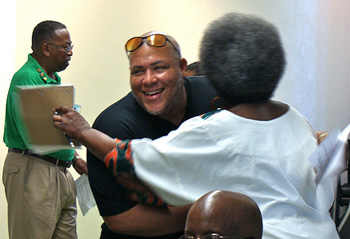 Two participants in the South L.A. Power Coalition’s forum greet each other with a handshake and an embrace.
Two participants in the South L.A. Power Coalition’s forum greet each other with a handshake and an embrace. .jpg)
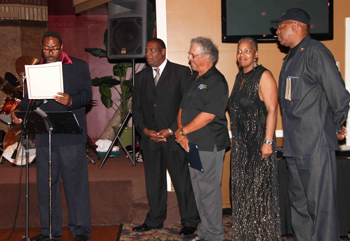 Drummer Al Williams, one of the Living Legends Linda Morgan (second from right) celebrated in April
Drummer Al Williams, one of the Living Legends Linda Morgan (second from right) celebrated in April




